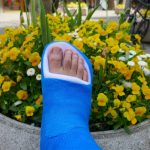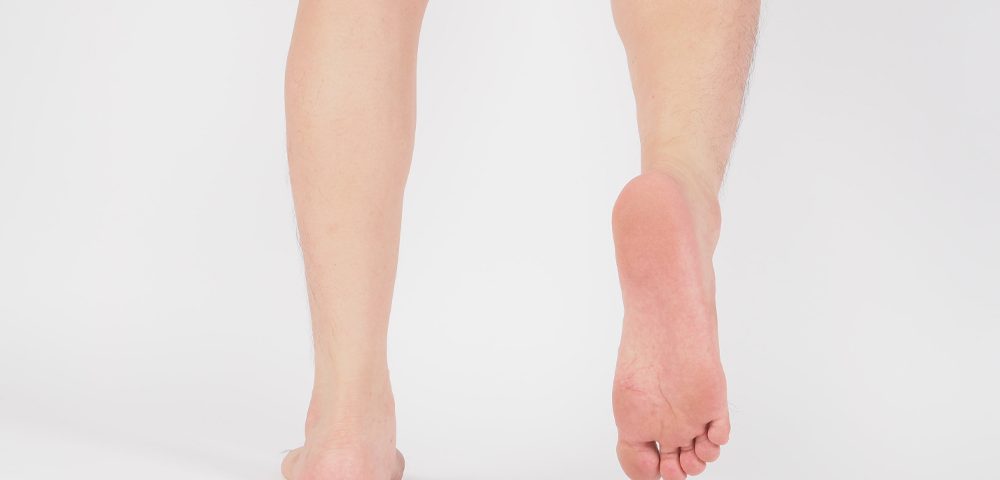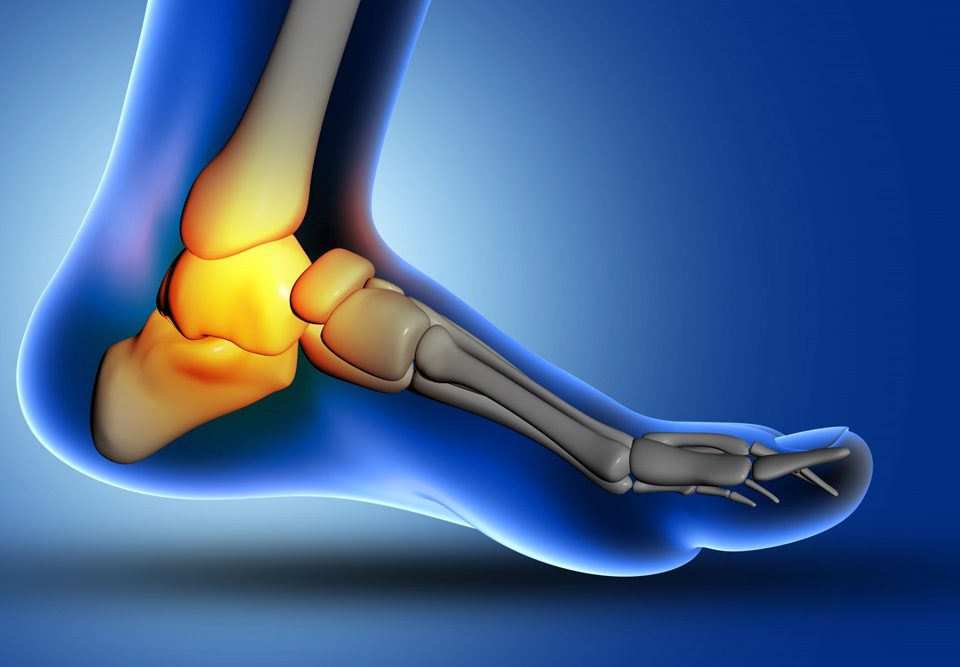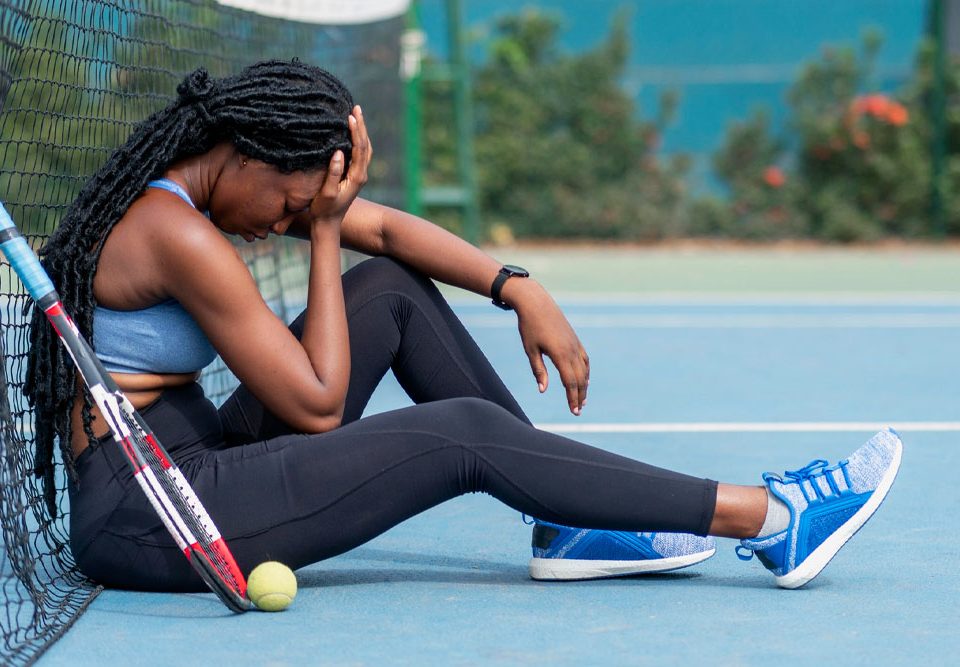
Bunion Surgery Recovery Week by Week
July 17, 2025
Do Ankle Braces Help Plantar Fasciitis?
July 24, 2025Yes, running with flat feet is possible. Many people do it every single day. Some even finish marathons. Others just enjoy jogging around the block. What matters most is learning how your flat feet work and how to keep them from getting sore or injured when you run.
When we say “flat feet,” we mean that the arches on the bottom of your feet are lower than usual, or maybe not there at all. Some people are born this way. Others get flat feet over time from age, injury, or extra weight. If this sounds like you, don’t worry. You can still run. But you do need to be a bit more careful than someone with normal arches.
Table of Contents
ToggleDo Flat Feet Cause Problems for Runners?
Yes. Flat feet can lead to problems when you run, especially if you don’t have the right support. Without arches, your feet can roll too far inward when you step. This is called overpronation. It puts extra pressure on your ankles, knees, and even your lower back.
The Challenges of Flat Feet for Runners
Some runners with flat feet say their legs get tired faster. Others feel pain in the heel or arch after running a short distance. It’s also harder to keep good form. All of this can slow you down or make you stop running sooner than you’d like. So yes, flat feet can cause problems for runners, but they don’t have to if you listen to your food doctor Phoenix and do things right.
How Can Flat Feet Affect Running?
When your foot hits the ground during a run, your arch is supposed to help absorb the shock and spread out the pressure. If you have flat feet, there’s no arch to do that job. So the pressure moves to other parts of your body.
Your ankle starts to roll inward. This pulls on your leg muscles and changes how your knees move. Your knees then push inward, too, which makes your hips and back work harder to keep your body balanced. The more you run this way, the more sore you might feel.
When running with flat feet, the feet also get tired faster. They might swell, cramp, or ache after just a short run. And without support, your risk of injury goes up, especially if you’re running on hard ground or doing long distances.
Techniques for Running with Flat Feet
There are smart ways to make running with flat feet easier and safer. These tricks can really help:
- Take smaller steps. Big steps can cause more impact and stress on the feet. Try to run lighter.
- Watch your posture. Stand tall and keep your chest up. Don’t lean too far forward or back.
- Strengthen your feet. Try picking up marbles with your toes, or scrunching a towel under your feet. This builds arch strength.
- Stretch every day. Focus on your calves, ankles, and the bottoms of your feet. Tight muscles make flat feet worse.
- Land softly. Don’t slam your heel down. Try to land closer to the middle of your foot.
- Run on soft ground. Dirt trails or grass are better than concrete sidewalks.
- Go slow. Increase your speed and distance little by little. Don’t push too fast.
Best Shoes for Running with Flat Feet
The right shoes can make a big difference for people running with flat feet. But not all running shoes are the same. Some are better for your needs than others. Look for shoes with:
- Arch support built inside. This helps lift your foot and gives it shape.
- Firm soles. This keeps your foot from rolling too much.
- Strong heel support. A stiff heel keeps your ankle steady and helps control movement.
- Soft padding in the shoe can absorb shock and protect your joints.
- A wide toe box. This gives your toes space to move without being squeezed.
- Shoes that have all these things can reduce pain and help you run farther.
Other Accessories and Supports
- Custom-made shoe inserts from a foot doctor
- Store-bought arch support insoles
- Foot taping for extra arch lift
- Compression socks for better blood flow
- Foam rollers to loosen tight muscles
Treatments for Runners with Flat Feet
If your feet always hurt when you run, it’s time to see a foot doctor. We treat flat-footed runners all the time. Some of the best treatments include:
- Custom orthotics made just for your feet
- Physical therapy to help muscles stay balanced
- Exercises that improve how your feet and legs work
- Gait training to fix how your feet land
- Laser or ultrasound treatments for sore tendons
- Surgery if the problem is severe (rare but sometimes needed)
You don’t have to live with the pain. Foot doctors Mesa can treat flat feet.
Running Tips for Those With Flat Feet
Here are some tips to prevent pain and injuries while running with flat feet:
- Stretch your feet and legs before and after each run.
- Use your inserts or orthotics every time you run.
- Don’t ignore the pain. Take breaks when needed.
- Replace old running shoes often.
- Avoid hills or uneven ground if you’re new to running.
- Warm up your muscles with a slow walk before running.
- Mix in other activities like biking or swimming.
- Rest between long runs so your body can heal.
These simple steps can help you run without problems for a long time.
Long Distance Running with Flat Feet
Yes, you can run long distances with flat feet. But it takes extra effort and planning. Your feet need more support than the average runner’s.
You should build up slowly; don’t jump into long runs right away. Use custom orthotics or good insoles. Train on soft surfaces when you can. Add strength and balance to your training. And be honest with yourself, if something hurts, stop and rest.
Many flat-footed runners finish marathons and half-marathons. You can too, with smart training and the right help.
Expert Flat Feet Treatments in Phoenix, Arizona
At Foot and Ankle Specialty Centers, we’ve helped thousands of people run better with flat feet. We work with runners from beginner to pro in Phoenix, Gilbert, Chandler, Mesa, and Scottsdale.
Our team of expert foot doctors can check how you walk, fit you for custom orthotics, and build a plan just for your feet. We use the latest tools and treatments to make sure you can keep running safely.
If you are ready to run without pain, schedule your visit online for an assessment and consultation.
FAQs
What are the best running shoes for men with flat feet?
Look for shoes with arch support, motion control, and firm heels.
What are the best running shoes for women with flat feet?
Choose shoes with built-in support, shock absorption, and a wide toe box.
What does flat feet running look like?
The feet often roll inward, with low or no arch, and the ankles may tilt.
Can a flat-footed person run?
Yes, with the right shoes and care, flat-footed people can run well.
Do flat feet affect running speed?
Yes, it can make you slower if you don’t have proper support or if pain sets in.



